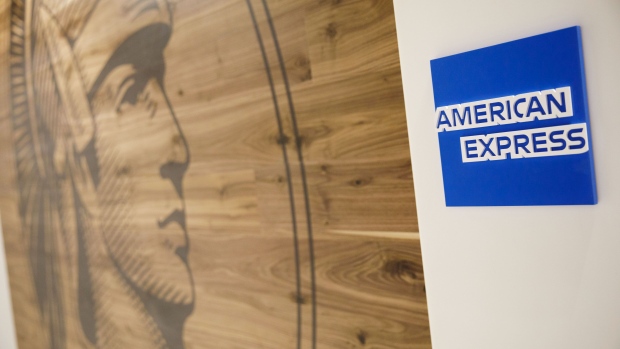Jan 26, 2021
AmEx profit target relies on big improvement in credit, economy
, Bloomberg News

American Express Co. said it won’t meet analysts’ estimates this year unless the economy improves in coming months.
Profit for 2021 would be about US$5 a share if the macroeconomic environment and credit quality of the card portfolio remain the same, AmEx said in a presentation Tuesday, well below the US$6.90 analysts have been predicting. If those metrics improve, profit could reach US$7 a share, the company said.
“We’re trying to at least help investors understand the low-end scenario and the high-end scenario, with the difference between the two for 2021 driven by almost entirely what happens with credit,” Chief Financial Officer Jeff Campbell said in an interview.
AmEx and its rivals had to set aside billions in reserves for souring loans last year as the pandemic roiled the economy and sent unemployment soaring. With many regions still under lockdown and struggling with uneven distribution of vaccines, prospects for a recovery remain cloudy, leaving those reserves locked in place until more signs of a rebound emerge.
AmEx shares slumped 2.88 per cent to US$117.7 at 9:48 a.m. in New York.
The company also said it now expects to meet its 2020 targets -- next year.
“While we remain cautious about the pace of recovery, we are focused on achieving our aspiration of being back to the original EPS expectations we had for 2020 in 2022,” Chief Executive Officer Stephen Squeri said in a statement.
AmEx was targeting earnings per share of US$8.85 to US$9.25 for last year, but that was before the pandemic struck, sending the economy into a free fall and stunting spending on the company’s cards.
Credit Trends
So far, AmEx’s customers have stayed on top of their bills. Write-off rates and delinquencies both dropped during the fourth quarter. And billings -- a measure of customers’ card usage -- have been slowly improving.
“Card member spending has continued to recover, and non-travel and entertainment spend exceeded pre-COVID levels for the second consecutive quarter,” Squeri said. Spending on the firm’s cards still dropped 15 per cent to US$277.5 billion.
While fourth-quarter profit fell 15 per cent to US$1.44 billion, or US$1.76 a share, that was still higher than the US$1.29 average of adjusted earnings per share that analysts in a Bloomberg survey were calling for. Profit was helped by a US$674 million release of reserves the company had set aside earlier in the year to cover souring loans.
AmEx has said in recent months that it’s focused on adding new card holders after severely curtailing those efforts during the early part of the pandemic. Spending on marketing and development costs dropped 5 per cent to US$1.86 billion, slightly less than the US$1.87 billion analysts estimated.
The firm also shelled out US$2.3 billion on rewards in the fourth quarter, a 16 per cent decline from a year earlier, even as consumers continued to take advantage of limited-time credits for streaming and wireless services that the card company rolled out last year. That was more than the US$2.22 billion that analysts were expecting.


